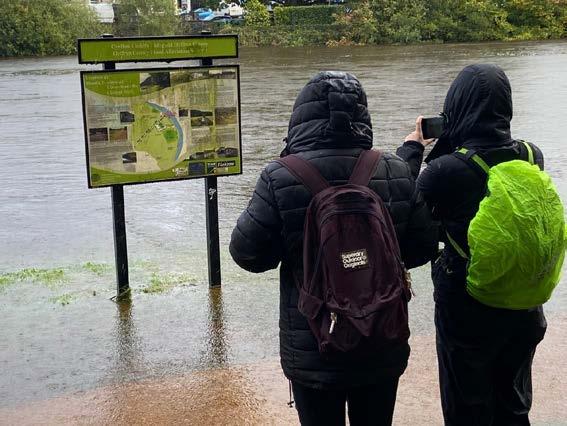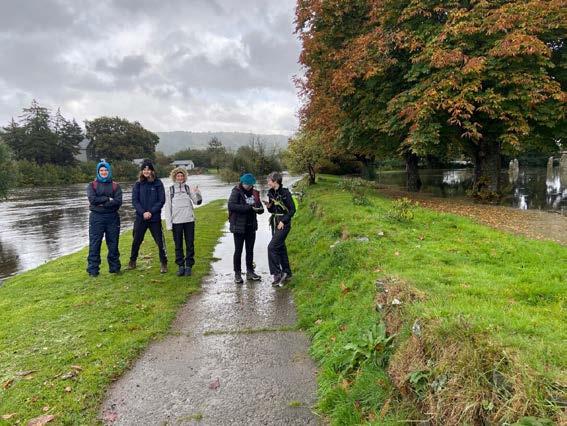
1 minute read
Understanding How Extreme River Flows and Sea Levels Could Provide Early Flood Warning
A new research paper in Estuaries and Coasts published by Post Doc Researcher Charlotte Lyddon, her supervisor Pete Robins, and others, provides the first step in improving coastal flood risk by analysing in detail, how long different UK rivers take to discharge to the coast following heavy storm rainfall. This is combined with an analysis of differing estuary types, to see which estuaries are most likely to impede the floodwaters from entering the sea, due to their shape and size. Finally, the paper considers the likelihood of the river flood-waters coinciding with a storm surge (a storm often produces both heavy rain and strong winds that drive the surge) or high tide at the coast.
Matching flood flow speeds and timings in different rivers with an understanding of which estuaries are most likely to experience storm surges, or when they might coincide with spring tides, could inform future flood protection measures. Such analysis could be valuable as the UK anticipates future extreme rainfall to intensify in the coming decades.
Previously, flooding has been investigated using daily-mean river flows, but this new work has shown that the many short and steep river catchments on Britain’s west coast drain rapidly, within a matter of hours, meaning that the daily-means mask out the extreme river behaviour that drives the flooding. This information will help climate modellers to produce future river flow projections at the appropriate temporal scales to predict changes in flood risk.
Peter Robins, Senior Lecturer in physical oceanography explains,
“
Most heavy storms and winds track-in from the Atlantic and hit the west and northwest coasts of Britain. In addition, the west coast catchments are mostly small and mountainous. This means that they fill up and drain out to the sea remarkably quickly, perhaps within a few hours. These catchments therefore tend to experience several potential ‘compound flooding’ events each year, with the chance of flooding actually happening being sensitive to the subtle timings of the combined river and sea level behaviour.
Over in the east, the catchments are often large and flat and take several days to drain. Here, flooding tends to be driven by either prolonged periods of heavy rain, or from easterly storm surges, but rarely both combined. These extreme events are less common and more predictable than in the west.”
A classic local example is the Conwy Valley, where this autumn the BSc Physical Geography and Oceanography students got to see river flooding, and flood mediation efforts in full force on a visit to Llanrwst during their Geohazards Flooding field trip











